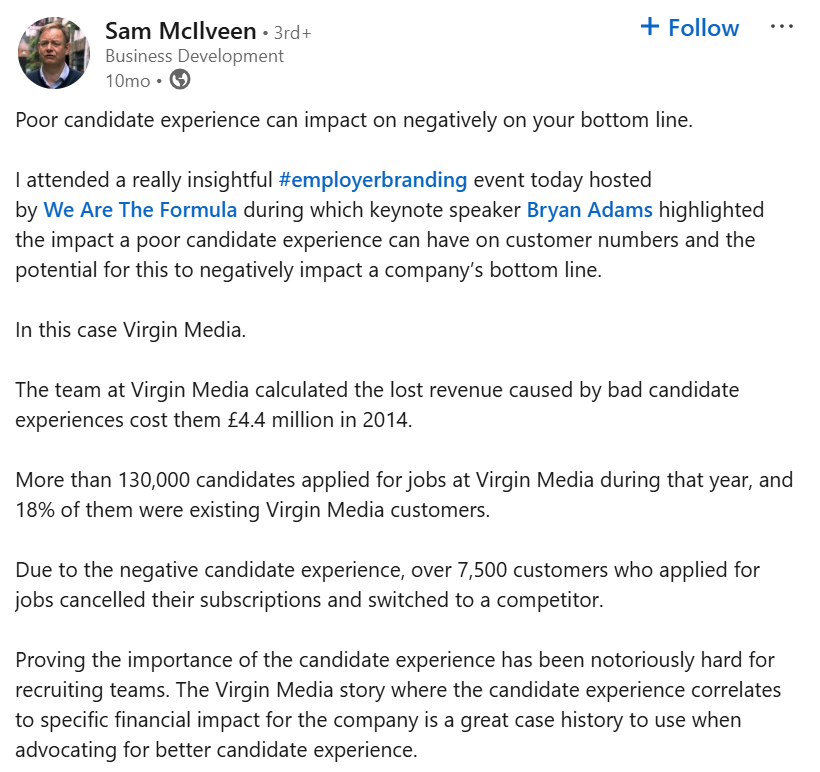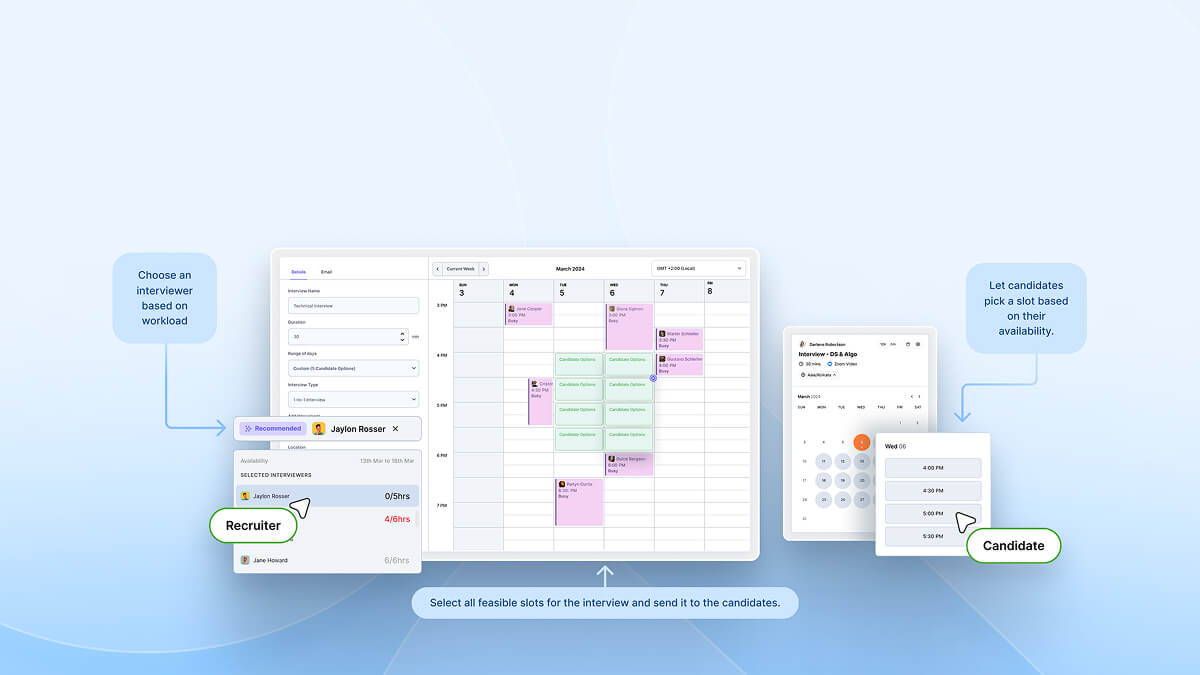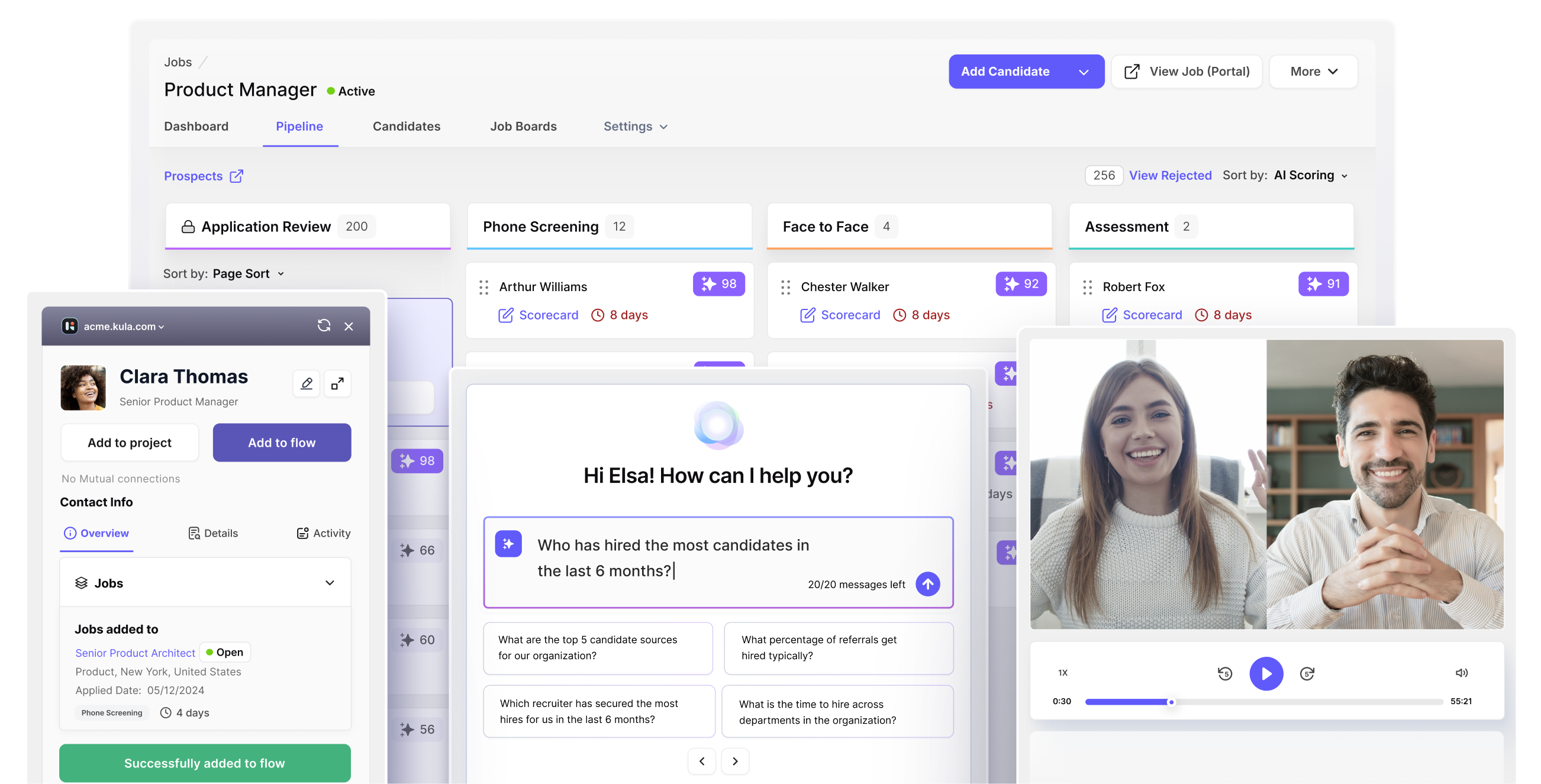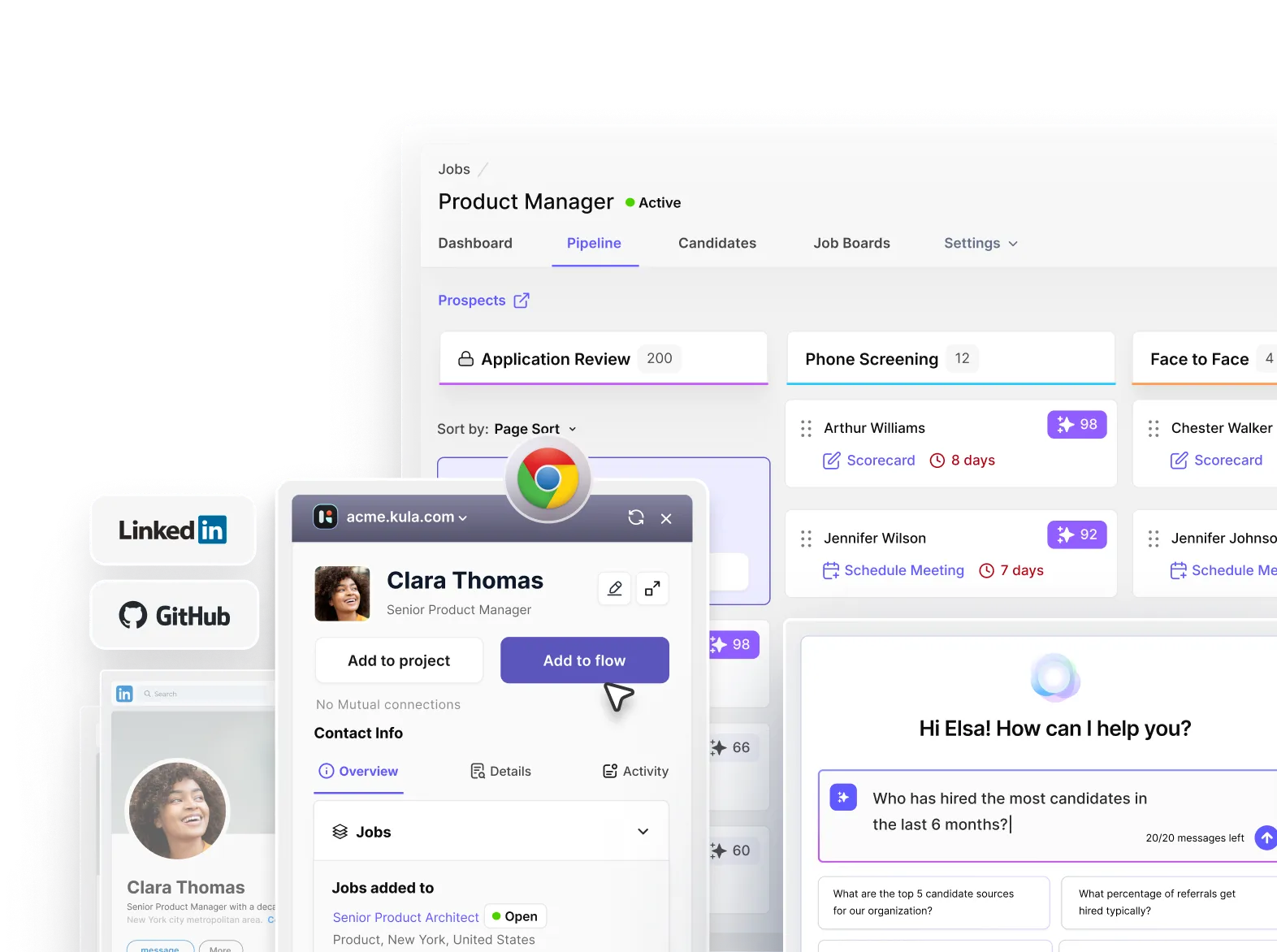Book a 30-minute demo and learn how Kula can help you hire faster and smarter with AI and automation
It started with a simple back-and-forth—“Are you free Tuesday at 3?”
Then came the time zone mismatches, double bookings, and endless email threads.
Check calendar. Send invite. Wait for reply. Reschedule. Repeat.
What seemed like a five-minute task turned into a bottleneck.
Candidates drop off. Managers miss slots. Interviews vanish into thin air.
More delays. More frustration. Less hiring momentum.
Today, manual scheduling isn’t just inconvenient—it’s costly.
It drains recruiter time, slows down your hiring pipeline, and risks losing top talent to faster-moving competitors.
A single delay can cost you the right hire. A poor experience can cost your brand.
But it doesn’t have to be this way.
Modern scheduling tools automate the chaos, freeing up recruiters to do what they do best: hire smarter and faster.
Let’s explore how manual scheduling is silently hurting your hiring and how automation can change everything.
How is manual scheduling slowing the hiring process?
Manual scheduling, often seen as a minor logistical task, has become a significant bottleneck in recruitment workflows.
As one recruiter on Reddit frankly put it, “Although this task seems straightforward, it seems to take forever.” Between candidates with last-minute emergencies, hiring managers whose meetings run over, and miscommunications across time zones, the process quickly devolves into a cycle of rescheduling and delays.
Each delay does more than waste time, it disrupts hiring momentum.
“A well-timed call can mean the difference between a candidate feeling excited about the opportunity or feeling disengaged,” noted the same recruiter.
When interviews are postponed or mishandled, candidates may interpret it as disinterest or disorganization, leading them to pursue other offers.
Manual scheduling also adds invisible workload. Recruiters often juggle hiring manager preferences, candidate time zones, and availability windows with no shared calendar access.
Even seasoned recruiters shared their frustrations. One described how they spent a week lining up ten high-quality candidates, only to have the client cancel and rebook all interviews last minute.
Beyond wasted hours, this manual chaos introduces friction into a process where speed and experience matter. A missed interview or a delayed response can mean losing top talent.
The deeper issue? Manual scheduling reflects a larger cultural gap—many hiring teams don’t treat recruiting as a business-critical priority. As one recruiter bluntly put it, “Until you have an engaged hiring team that takes ownership of their part of the process, it will remain painful.”
The real cost: Time, money, and missed hires
1. A recruiter spent X/month on scheduling
In a recent nationwide recruiter survey, 67% of respondents mentioned it takes between 30 minutes and 2 hours to schedule a single interview. Multiply that by the size of your team, and the financial drain becomes impossible to ignore. This is time that could be better spent sourcing, screening, or nurturing candidates.
The longer it takes to fill a position, the more expensive it becomes for your team and your company.
2. Delays increase time-to-hire → Top candidates drop off
Every back-and-forth email or calendar conflict adds days, sometimes weeks to your hiring cycle. The longer it takes to schedule an interview, the more likely top candidates are to disengage or accept offers elsewhere.
While the average time to hire sits around 44 days, many roles remain open for months. And with each delay, the process becomes slow and signals disinterest, and leaves room fo
If your hiring process drags on, you risk losing top candidates to more agile competitors.
Recommended read: 11 Effective Ways To Reduce Time To Hire
3. Unfilled roles slow down projects and business growth
Every unfilled role has a ripple effect. Product teams fall behind. Sales teams lose leads. Customer service queues pile up.
When roles sit vacant because scheduling bottlenecks delay hiring decisions, the entire organization suffers. According to industry benchmarks, each day a position remains open costs the company thousands in lost productivity, not to mention team burnout.
4. Poor candidate experience damages the employer brand
Candidates remember their hiring experience. Long gaps between communications, constant rescheduling, or unclear instructions all leave a bad taste.
And bad experiences don’t stay private. According to research, 25% of unhappy candidates share their experience publicly on platforms like Glassdoor or LinkedIn.
In fact, Virgin Media once lost £4.4 million in revenue after rejected candidates, who were also customers, left due to a negative recruitment experience.

Every interaction matters, from a job application to a final offer. A poor candidate journey damages reputation, reduces the quality of your talent pool, and even impacts customer perception.
Recommended read: The Definitive Guide for 2024 to Candidate Relationship Management
How automated scheduling tools save time and boost ROI
1. Automates invites, time zone handling, reschedules, and reminders
Modern scheduling tools, either standalone or integrated into your ATS (Applicant Tracking System), take over repetitive scheduling tasks like:
- Automatically send calendar invites once a time is selected.
- Adjust for different time zones without back-and-forth clarification.
- Allow candidates and hiring managers to reschedule with just a click—no need for emails or phone calls.
- Send reminders to all parties to reduce no-shows.
By taking over these administrative tasks, scheduling tools reduce the risk of human error and prevent unnecessary delays in the interview process.
2. Cuts recruiter time from 4-6 hours/week to 30-60 minutes
Manual scheduling eats up 4–6 hours per week per recruiter. In some cases, this can go up to 16 hours.
But with tools like Calendly, Prelude, or GoodTime, that time drops to just 30–60 minutes a week, a reduction of nearly 80%, according to a 2025 report by Talent Tech Labs.
Since automation handles the back and forth, recruiters only need to step in for exceptions. That means less time wasted on admin and more time focused on what really matters, finding and hiring the right talent.
3. Reduce hiring cost
As per SHRM, data shows the average cost per hire is nearly $4,700, but total costs can rise to 3 to 4 times the employee’s salary when you factor in both hard and soft costs.
While hard costs include job ads and recruiter fees, a major portion of 60% comes from soft costs like time spent by hiring managers and HR teams on interviews, coordination, and scheduling.
Since we have learned how automation can shrink recruiter time from 5 hours per week to just 30 minutes, it will directly impact the 60% soft cost portion.
Why use Kula for automating interview scheduling?
Because manual scheduling slows you down, and Kula was built to speed things up without cutting corners.
Kula is an all-in-one ATS designed to help companies hire up to 5x faster, and its built-in scheduling features eliminate the back-and-forth that frustrates both recruiters and candidates. Whether you're coordinating across teams or sharing self-scheduling links with candidates, Kula makes it seamless.

Here’s what sets Kula apart:
✅ Built-in scheduling automation that considers interviewer load and availability
✅ Self-scheduling links that empower candidates to pick convenient slots
✅ AI-powered interview intelligence that takes notes, generates transcripts, and fills in scorecards automatically
✅ Smart candidate scoring to prioritize the best-fit applicants faster
✅ Conversational AI analytics for instant insights into your pipeline
Recruiters no longer need to juggle calendars, chase follow-ups, or scramble to debrief. As Geetanjali, Head of Talent Acquisition at Plum, puts it, “Our managers love that they can focus on the conversation without worrying about taking notes.”
Curious to see it in action? Book a demo and explore how Kula makes scheduling (and hiring) effortless.






















